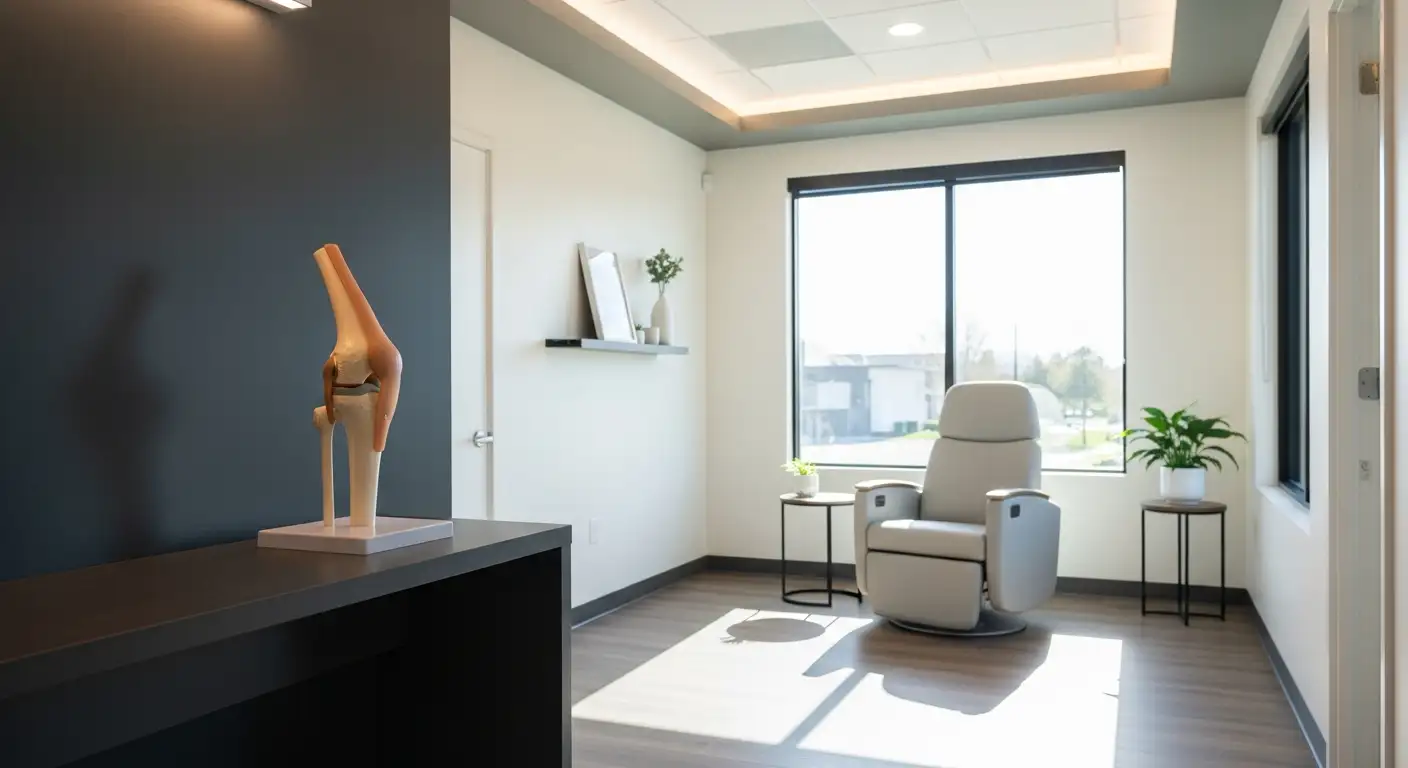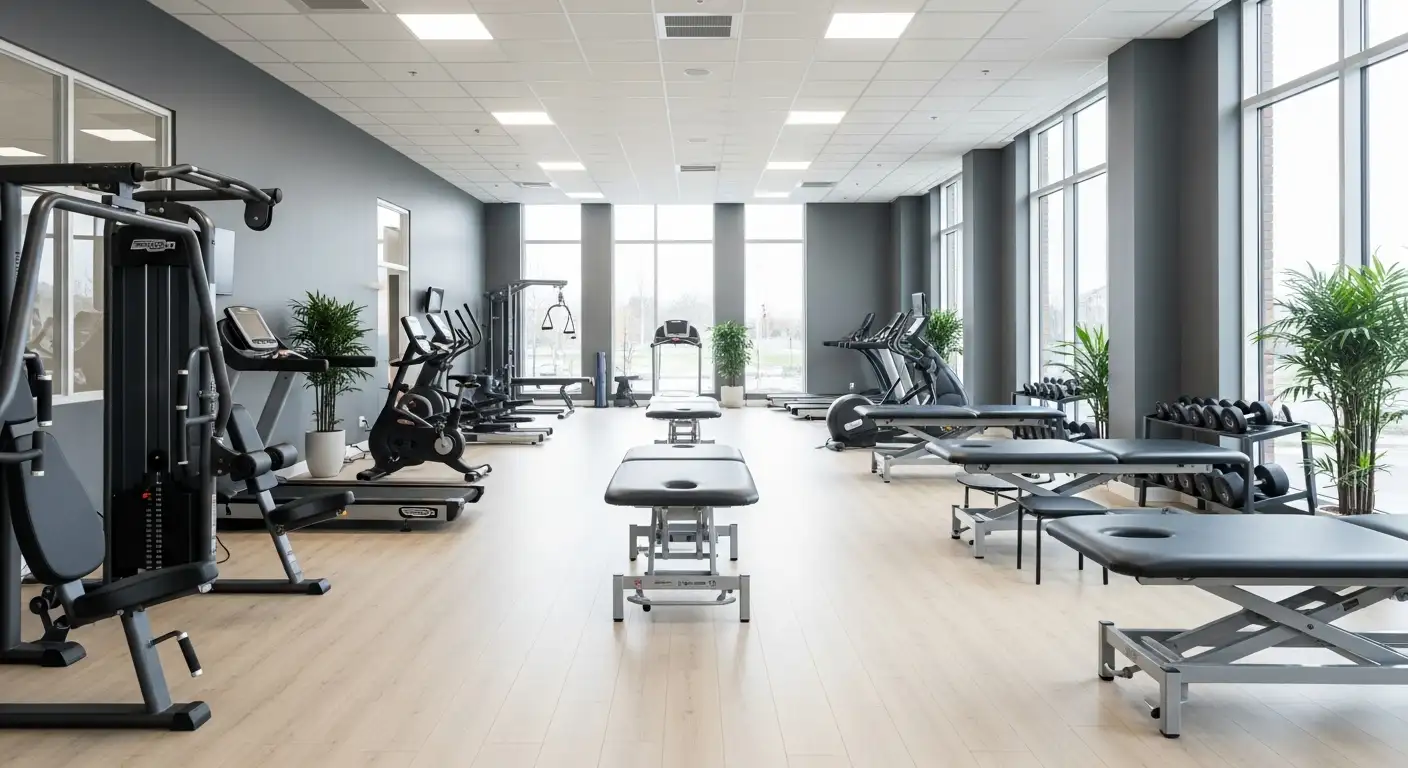
Understanding Popliteus Tendinitis
Definition and Importance
Popliteus tendinitis refers to inflammation of the popliteus tendon, which is located at the back of the knee. This condition is important to understand as it can cause significant pain and limit athletic performance. Correct diagnosis is crucial; if misdiagnosed, it may lead to unnecessary interventions or surgeries. Typically, popliteus tendinitis develops in athletes who run or engage in activities on hills or uneven surfaces. It may also be associated with conditions like hyperpronation of the foot, resulting in external rotation of the tibia [2].
Symptoms and Diagnosis
Common symptoms of popliteus tendinitis include pain located at the back of the knee, tenderness along the proximal popliteus tendon, and pain during resisted external rotation. The pain intensity can range from mild to severe, often intensifying with activities such as walking downhill or running extensively. Additional symptoms may include:
Diagnosis Assessment
To diagnose popliteus tendinitis, a healthcare professional will evaluate the patient's medical history and symptoms, including:
Diagnostic tests may include muscle testing to identify any weakness or pain, as well as MRI scans to assess the soft tissues around the knee. Understanding these aspects helps in ensuring accurate diagnosis and effective treatment strategies. For further exploration of symptoms related to knee issues, refer to our pain location chart.
Treatment Options for Popliteus Tendinitis
Dealing with popliteus tendinitis involves a range of treatment strategies aimed at alleviating pain and restoring function to the knee. These plans can be categorized into conservative and advanced treatments, which may vary based on the severity and persistence of symptoms.
Conservative Treatments
Conservative treatment approaches are often the first line of defense for popliteus tendinitis. These methods are generally effective and focus on relieving pain and promoting healing.
Treatment MethodDescriptionRestAllows the affected area to heal. Reduces strain on the popliteus muscle.IceApplying ice to the knee can reduce swelling and pain. Recommended for 15-20 minutes several times a day.CompressionUsing elastic wraps or compression bandages can help limit swelling.ElevationKeeping the knee elevated above heart level can further assist in reducing swelling.Physical TherapyInvolves exercises, including eccentric strengthening of the quadriceps, which has shown positive outcomes for most patients.Nonsteroidal Anti-Inflammatory Drugs (NSAIDs)Medications like ibuprofen can provide pain relief and reduce inflammation.
For most individuals, a combination of these conservative treatments can lead to a significant improvement in symptoms within approximately six weeks. However, if symptoms persist or worsen, more advanced treatment options may be needed.
Advanced Treatments
In cases where conservative treatments do not yield sufficient relief, advanced treatment options should be considered. These may include:
Treatment MethodDescriptionCorticosteroid InjectionsLocal injections may help reduce inflammation and alleviate pain in stubborn cases [1].Surgical InterventionFor chronic conditions that do not respond to other treatments, surgical procedures such as arthroscopic treatment can provide improved pain relief and knee function [3]. Surgery may involve the removal of the tendon sheath or other damaged tissue.
For detailed rehabilitation strategies and practices that are essential for managing popliteus tendinopathy, one may refer to additional resources or consult with a healthcare professional for tailored guidance. Understanding and utilizing these treatment options can help address the discomfort associated with popliteus tendinitis and foster a successful recovery journey.
Popliteus Muscle Function
Understanding the role of the popliteus muscle is essential to grasp its significance in knee stability and movement. This muscle plays a crucial role in various knee functions.
Anatomy and Role
The popliteus muscle is a small but vital muscle located at the back of the knee joint. It originates at the lateral condyle of the femur and the posterior horn of the lateral meniscus. The muscle inserts on the tibia just proximal to the soleal line and below the tibial condyles. It is innervated by the tibial nerve, making it critical for knee movement.
This muscle has four primary functions:
Contribution to Knee Stability
The popliteus muscle plays a critical role in maintaining the stability of the knee joint. By laterally rotating the femur on the tibia when the foot is in contact with the ground, it helps to unlock the knee joint, which is essential for smooth bending and straightening of the leg. This unlocking mechanism is particularly important during activities that involve running or walking, especially on uneven surfaces such as hills.
For athletes or individuals engaging in physical activities that require sudden movements or changes in direction, the popliteus muscle aids in stabilizing the knee. Any dysfunction or tendinopathy in this muscle can lead to discomfort or pain in the knee area, making understanding its function vital for those prone to conditions like popliteus tendinitis. For additional related topics, individuals can explore exercises that strengthen the surrounding muscles, such as sartorius exercises or the best exercises for quads.
Preventing and Managing Popliteus Tendinopathy
Promoting healthy knee function is essential for preventing popliteus tendinitis. Understanding best practices for prevention and effective rehabilitation strategies can significantly reduce the risk of developing this condition.
Best Practices for Prevention
To minimize the chances of experiencing popliteus tendinopathy, individuals should consider implementing the following preventive strategies:
PracticeDescriptionProper FootwearWear shoes that offer adequate support, especially when engaging in activities like running on uneven surfaces.Strength TrainingFocus on strengthening the muscles surrounding the knee, particularly the quadriceps, to enhance stability and reduce strain. Eccentric strengthening exercises are particularly effective.StretchingRegularly stretch the muscles around the knee joint to improve flexibility and range of motion.Gradual Increase in ActivityGradually increase the intensity and duration of physical activities to lessen the risk of overuse injuries.Gait AnalysisConsider having a professional perform a gait analysis to identify any abnormal foot mechanics that may contribute to knee issues.
Popliteus tendinopathy can often result from overuse or specific movement patterns, such as running downhill or training on banked surfaces [2]. Being mindful of these activities can help prevent injury.
Rehabilitation Strategies
If someone experiences symptoms of popliteus tendinopathy, it is crucial to follow structured rehabilitation strategies to promote healing and recovery. These strategies should include:
Rehabilitation StrategyDescriptionRestAllow the knee to recover by minimizing activities that exacerbate pain, especially running and downhill walking.Ice TherapyApply ice to the affected area to reduce inflammation and relieve pain.ElevationElevate the leg to decrease swelling and improve circulation.Physical TherapyEngage in a physical therapy program focused on eccentric strengthening of the quadriceps and proper stretching techniques.Pain ManagementUtilize nonsteroidal anti-inflammatory medications or corticosteroid injections as advised by a healthcare professional.Alternative ActivitiesPerform low-impact exercises, such as cycling, during rehabilitation to maintain fitness without stressing the knee.
Proper diagnosis, including a thorough physical examination and possibly imaging, is essential for effective rehabilitation [2]. Following these strategies can enhance recovery and reduce the likelihood of symptoms recurring in the future.
For more information on related topics, consider exploring sartorius exercises or understanding other knee conditions such as tibialis anterior pain near knee.
Unique Challenges of Popliteus Tendinopathy
Popliteus tendinopathy can pose significant challenges for both diagnosis and management. Understanding the common causes and the difficulties associated with diagnosing this condition is crucial for effective treatment.
Common Causes
Popliteus tendinopathy often arises from overuse, particularly among athletes engaged in running or training on hills or banked surfaces. The condition may be triggered by various activities that exert undue stress on the popliteus muscle-tendon unit. Here are some common causes:
CauseDescriptionOveruseRepeated activities that stress the muscle-tendon unit can lead to inflammation and pain.Varus ForceA direct varus force with the tibia externally rotated can strain the popliteus tendon.HyperextensionSudden forced knee hyperextension combined with tibia internal rotation may result in injury.HyperpronationFoot hyperpronation can lead to tibial external rotation and contribute to strain on the popliteus.
For more information on related knee problems, check our articles on tibialis anterior pain near knee and the knee joint line.
Diagnosis Challenges
Diagnosing popliteus tendinopathy can be complicated due to the anatomical location of the popliteus tendon and the subtleties of symptoms. Proper diagnosis typically involves a thorough case history and a physical examination. Patients may exhibit tenderness along the proximal popliteus tendon and experience pain with resisted external rotation. Diagnostic challenges include:
Understanding these challenges allows for better awareness and early intervention. For those exploring additional treatment methods, alternative approaches for knee pain can be found in our articles on plica syndrome exercises and sartorius exercises.
Specialized Therapies for Popliteus Injuries
For individuals suffering from popliteus tendinitis, specialized therapies can play a crucial role in recovery and functionality. This section discusses two effective therapeutic techniques: Motion Specific Release (MSR) Therapy and the Popliteal Squat Release Technique.
Motion Specific Release (MSR) Therapy
Motion Specific Release (MSR) therapy is a comprehensive treatment system that incorporates various therapeutic modalities to address musculoskeletal issues, including popliteus tendinitis. This innovative approach considers the patient's specific motions and activities, allowing for targeted treatment to resolve injuries effectively.
MSR therapy involves a combination of soft tissue manipulation, neuromuscular re-education, and strengthening exercises. Its design is tailored to restore normal movement patterns and relieve pain associated with popliteus injuries. Among the techniques utilized in MSR, the Popliteal Squat Release is notably effective in enhancing the function of the muscle and improving overall knee function.
Popliteal Squat Release Technique
The Popliteal Squat Release Technique specifically targets the popliteus muscle, which is critical for knee stability and function. This method focuses on engaging the muscle while performing a controlled squat, thereby promoting flexibility and strength in the surrounding structures.
The steps involved in the Popliteal Squat Release Technique typically include:
This technique can be incorporated into rehabilitation routines to help patients recover from popliteus tendinitis effectively. Regular practice not only aids in healing but also contributes to improving overall knee joint function. Those interested in strengthening related muscles can explore sartorius exercises or the best exercises for quads.
Overall, both MSR therapy and the Popliteal Squat Release Technique offer focused solutions to assist individuals in managing popliteus injuries. For those experiencing discomfort in the knee region, understanding these specialized therapies is essential for effective rehabilitation and recovery.
References
[2]:
[3]:
[4]:
[5]:





